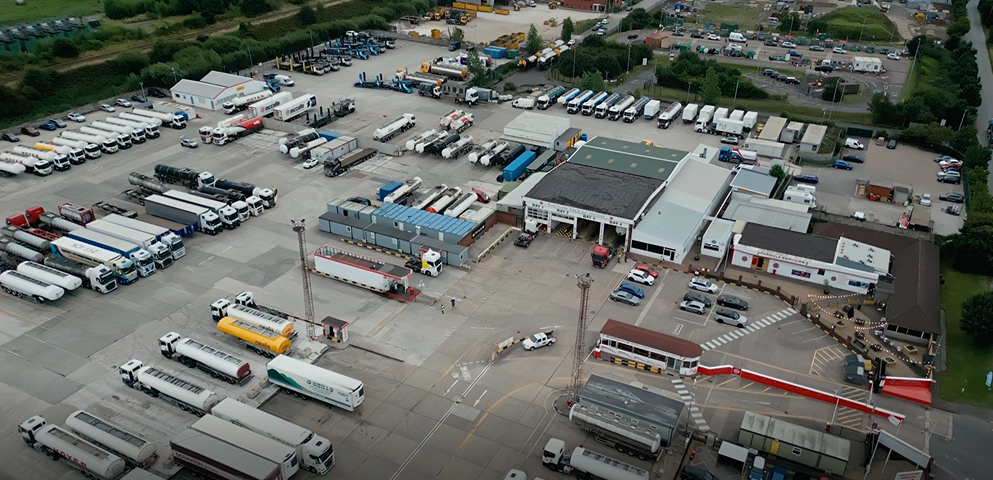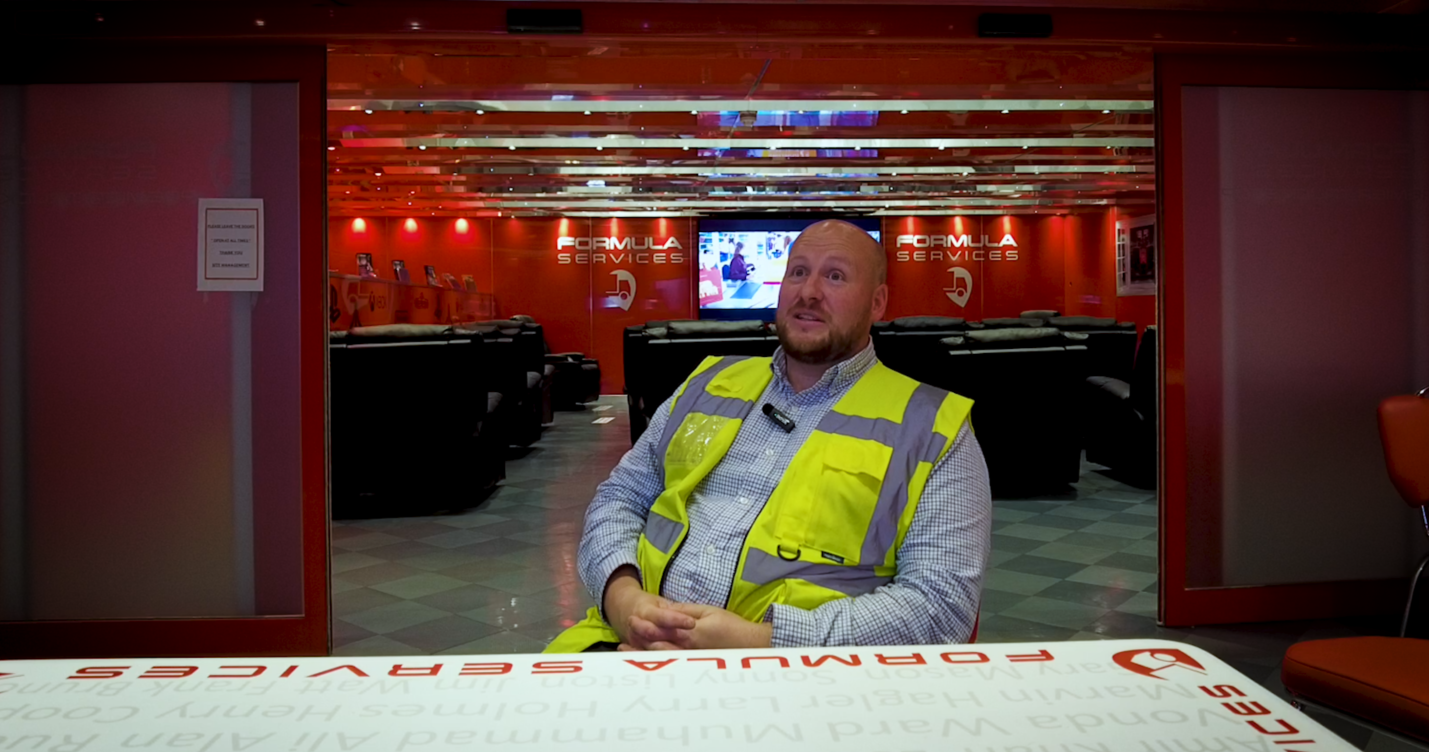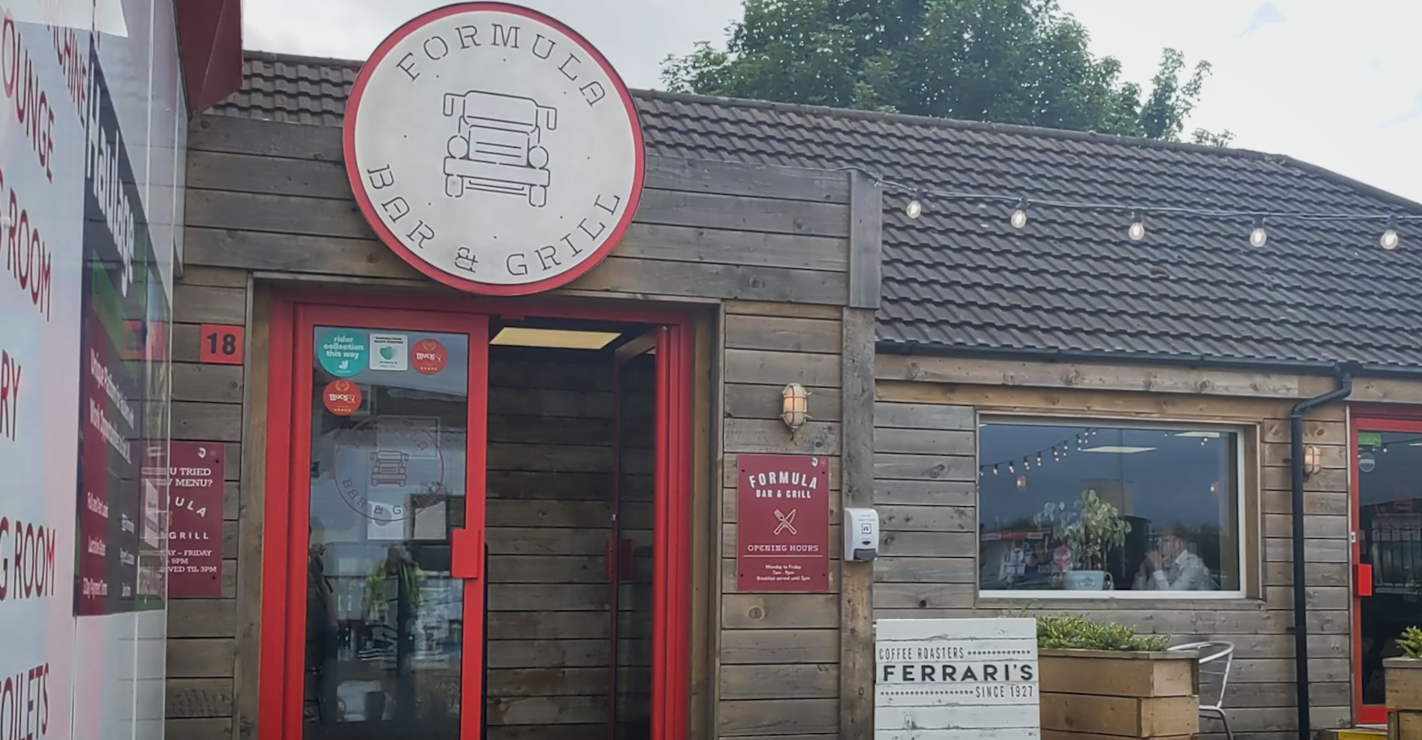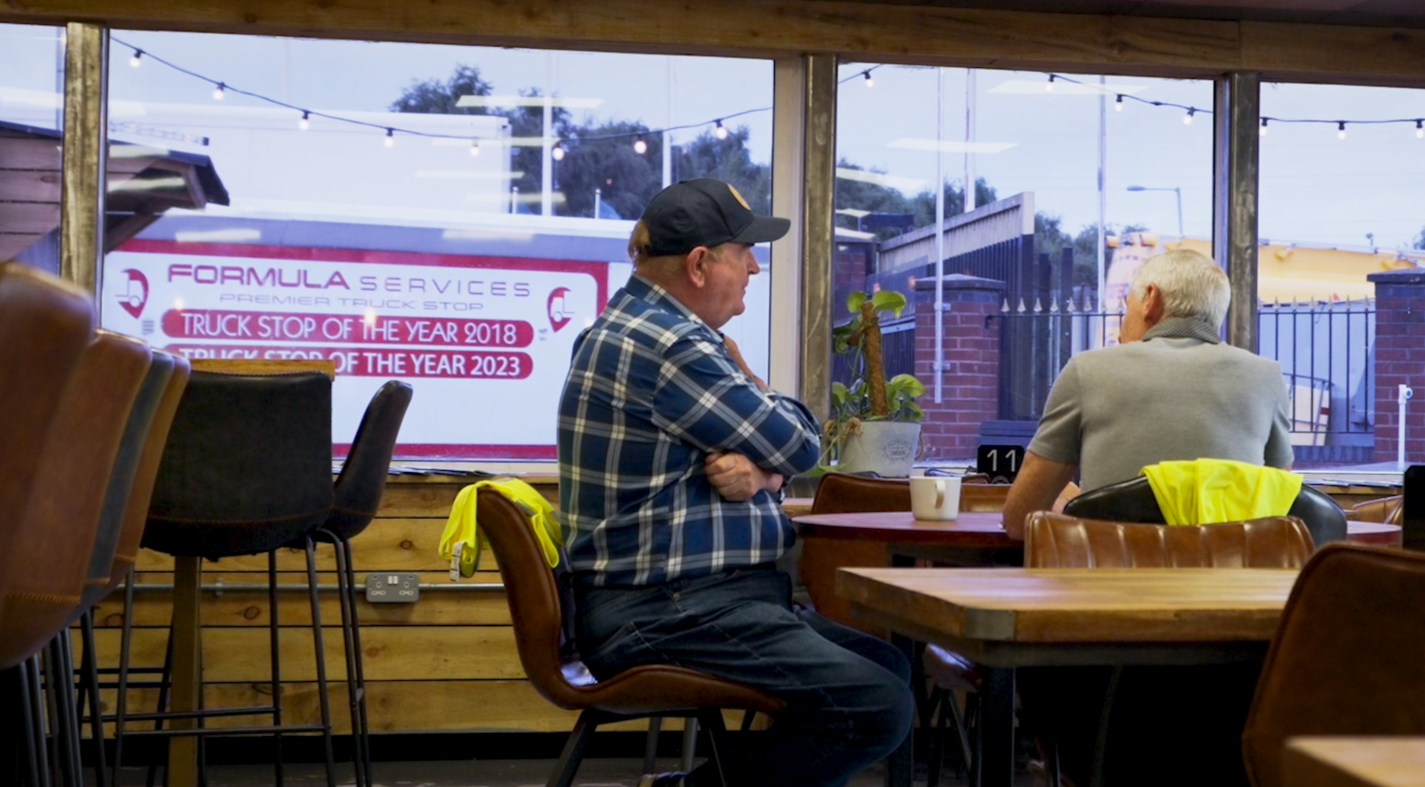
Susie Jones
Inside Formula Premier Truckstop: Odkrywanie ich sukcesu i relacji ze SNAP
Utworzony: 07.08.2025
•
Aktualizacja: 07.08.2025
Położony w Ellesmere Port, rzut kamieniem od autostrady M53, jest Formula Premier Truckstop. Uznany za brytyjski Truckstop Roku 2023, obiekt stał się zdecydowanym faworytem wśród społeczności kierowców ciężarówek. W hołdzie dla ich powiązań z Formułą 1 (obiekt dostarczał kiedyś paliwo do samochodów wyścigowych na całym świecie), postój ciężarówek jest oblany kultową czerwienią, z mnóstwem sportowych pamiątek, które zapewnią odwiedzającym zajęcie na wiele godzin.
Świętując 10. rocznicę istnienia firmy, spotkaliśmy się z kierownikiem operacyjnym Ashem Evansem, aby omówić wszystko, od nowych obiektów i celów zrównoważonego rozwoju po dobrostan kierowców i relacje z SNAP.
Działamy jako postój dla ciężarówek od 10 lat. Jesteśmy otwarci na wszystkich kierowców ciężarówek, zarówno dużych, jak i małych. Mamy stację paliw, która jest otwarta tak długo, jak długo masz kartę paliwową ", wyjaśnia Ash.

Udogodnienia
Na terenie obiektu znajduje się szereg fantastycznych udogodnień zapewniających kierowcom ciężarówek dom z dala od domu.
"Mamy około 150 miejsc parkingowych, restaurację na miejscu, siłownię oraz dedykowane męskie i damskie toalety. Staramy się zawrzeć jak najwięcej w cenie parkingu " - mówi Ash.
Podczas oprowadzania nas po obiekcie, przechodzimy przez dedykowany pokój gier, wyposażony w bilard i stół do tenisa stołowego, część wypoczynkową z fotelami do masażu i mnóstwem konsol do gier, które pomogą zrelaksować się kierowcy po długiej zmianie. Z bardziej praktycznej strony, obiekt oferuje pralnię, siłownię i kuchnię do przygotowywania domowych posiłków. Ci, którzy nie mają ochoty na gotowanie po całym dniu za kółkiem, mogą skorzystać z restauracji na miejscu - teraz oferującej kupony na posiłki SNAP.
*"Zawsze szukają sposobów na ulepszenie strony. Udogodnienia, które mają, sprawiają, że jest to przyjemne miejsce dla kierowców. To sprawia, że podróż kierowcy jest o wiele bezpieczniejsza i łatwiejsza, gdy wiedzą, że na jej końcu znajdują się tego rodzaju udogodnienia".
- Stuart Willetts, UK Business Development Manager w SNAP.

Niedawno obiekt wyremontował zaplecze dla kobiet, wyposażając je w najnowocześniejsze łazienki przypominające spa. Modernizacja objęła toaletę i prysznic neutralne pod względem płci - oba obszary są zamknięte, aby zapewnić bezpieczeństwo.
*"Spotkaliśmy się z naprawdę dobrymi opiniami na temat nowych udogodnień i dużym wzrostem liczby kobiet-kierowców na miejscu, co cieszy" - wyjaśnia Ash.
Odkryj nowe udogodnienia w Formule dzięki naszemu quickfire Q&A z Ashem.

Jak SNAP przyniósł korzyści Formule
Ash i zespół mają bliskie relacje ze Stuartem Willettsem, jednym z menedżerów ds. rozwoju biznesu SNAP w Wielkiej Brytanii, który zawsze jest pod telefonem, aby omówić wszelkie pytania.
*"Relacje, jakie mamy ze SNAP od wielu lat, naprawdę odzwierciedlają to, jak dobrzy jesteście w tym, co robicie" - stwierdza Ash.
Ash wyjaśnia, w jaki sposób oferowanie kuponów na posiłki SNAP przyniosło korzyści nie tylko kierowcom, ale także firmie:
*W ostatnich latach jedną z najlepszych rzeczy było wprowadzenie bonów na posiłki za pośrednictwem SNAP. Brak tej oferty był kiedyś nieco negatywny wśród kierowców. Otrzymanie posiłku wraz z parkingiem i brak konieczności samodzielnego wydawania pieniędzy to duża korzyść".
*To było naprawdę dobre pod względem zadowolenia klientów i budowania przychodów".
Dobre samopoczucie kierowcy
Dobrostan kierowców jest gorącym tematem dyskusji w branży od dłuższego czasu. Przy wskaźniku samobójstw wśród kierowców ciężarówek o 20% wyższym niż średnia krajowa, postoje ciężarówek odgrywają istotną rolę w poprawie dobrostanu kierowców. Coś, co zdaniem Ash nie powinno być trudne do osiągnięcia dla postoju ciężarówek:
*Kierowcy nie chcą wiele. Chcą dobrego, czystego miejsca do umycia się, ogolenia, zrobienia tego, co muszą i zjedzenia smacznego posiłku. To nie jest duże wymaganie dla kogoś i nie powinno być dużym wymaganiem dla firmy, aby im to zapewnić".
Z pewnością jest to kluczowa kwestia dla Formuły, wpływająca na wszystko, od ich obiektów i ciągłych ulepszeń po bezpieczeństwo i ochronę parkujących.
*"Mamy ANPR, 80 kamer CCTV, ogrodzenie dookoła, śluzę powietrzną i całodobową ochronę" - mówi Ash.
Branża ma przed sobą długą drogę, a Formula Truck Stop wysoko stawia poprzeczkę. Zapytaliśmy Ash, co branża może zrobić, aby poprawić samopoczucie kierowców:
*"Największą rzeczą, jaką mogą zrobić, jest stworzenie większej liczby postojów dla ciężarówek, które spełniają oczekiwania i potrzeby współczesnego kierowcy, z dobrymi udogodnieniami. Wszyscy musimy dążyć do tego, aby tak się stało."
Coś, czego Stuart jest aż nazbyt świadomy, musi się wydarzyć, ponieważ jego rola w SNAP pozwala mu wczuć się w codzienne wyzwania, przed którymi stają kierowcy ciężarówek:
*Jedną z zalet mojej roli jest fakt, że zawsze jesteśmy w trasie. Dzięki temu możemy posmakować, jak to jest, gdy kierowcy nieustannie jeżdżą i potrzebują przerwy pod koniec dnia. Daje nam to odrobinę empatii i współczucia dla kierowców. Dzięki temu możemy spojrzeć na naszych partnerów serwisowych z prawdziwym wglądem w to, z czym muszą sobie radzić kierowcy."

Przyszły rozwój
Truck Stop przeszedł długą drogę od swoich skromnych początków. Dzięki pomocy SNAP w usprawnieniu operacji, obiekt mógł skoncentrować się na rozwoju i realizacji swoich celów w zakresie zrównoważonego rozwoju. Ponad 195 000 kierowców ciężarówek w sieci SNAP sprawiło, że obiekt musiał dodać przepełniony parking, dając im dodatkowe 50 miejsc, aby sprostać rosnącemu zapotrzebowaniu.
Ash wyjaśnia, że witryna koncentruje się teraz na celach zrównoważonego rozwoju:
*Obecnie pracujemy nad kilkoma projektami, jednym z nich jest nowy system ciepłej wody i ogrzewania, który będzie wykorzystywał powietrzną pompę ciepła i będzie naprawdę energooszczędny.
*W tym roku zainstalowaliśmy również panele słoneczne, aby pomóc w redukcji emisji dwutlenku węgla".
Dołącz do rosnącej sieci SNAP
Zainspirowany tym, co właśnie przeczytałeś? Rozpocznij swoją historię sukcesu z SNAP już dziś.
Zobacz pełny wywiad z [Formula Truckstop na naszym kanale YouTube] (https://www.youtube.com/watch?v=89ZdgNd1DDE&t=1s).



